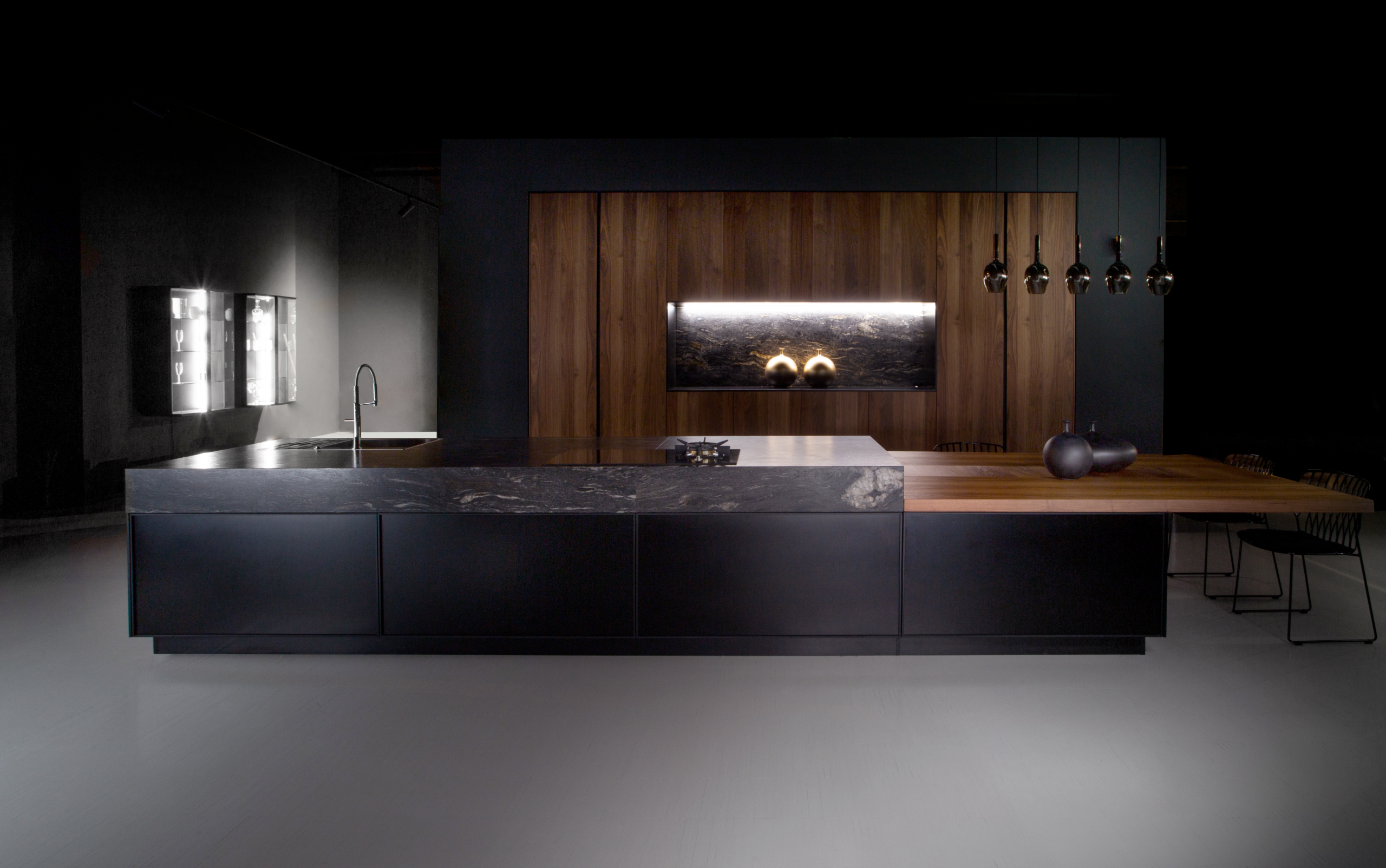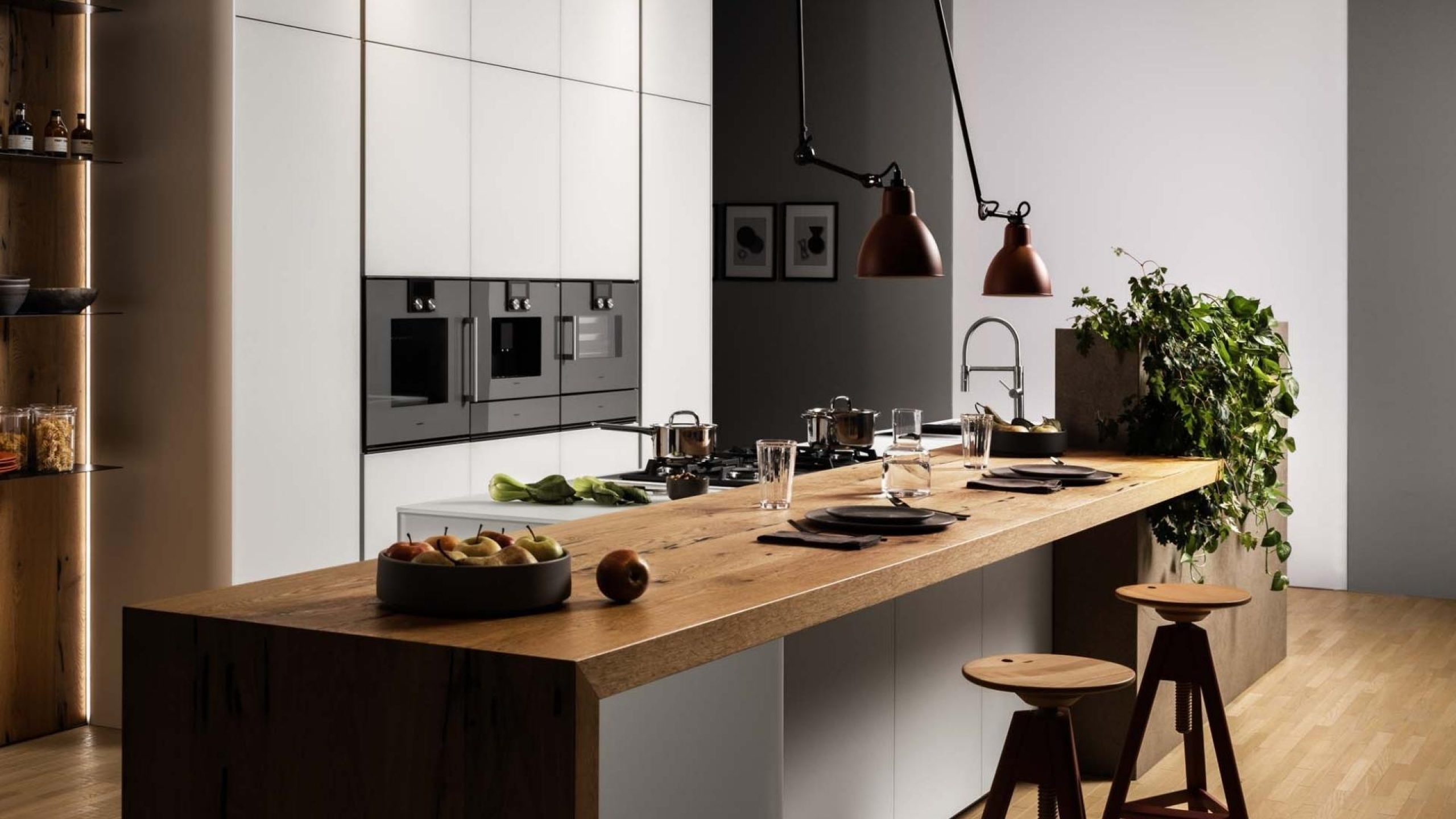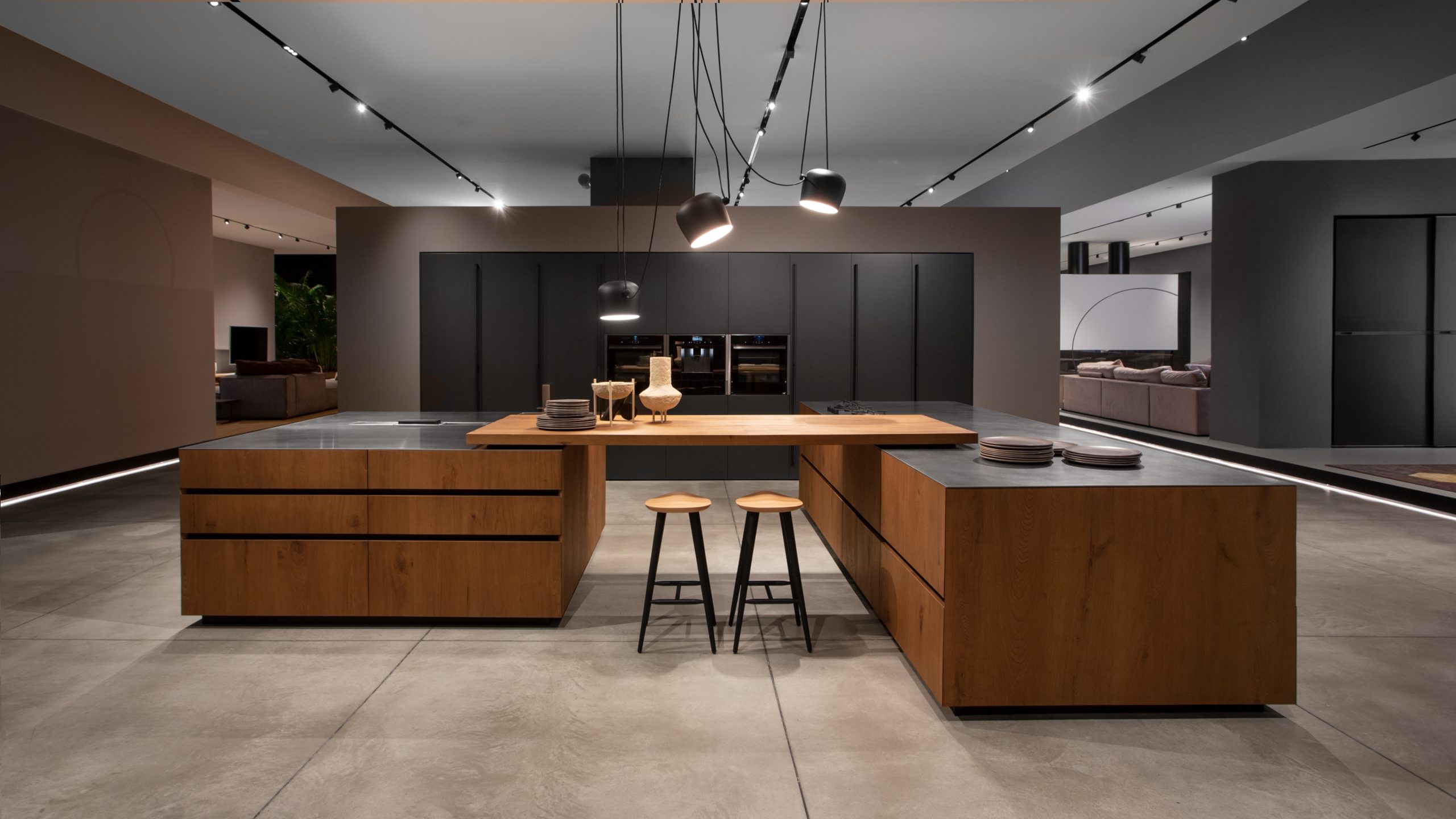May,2024
The central island in the kitchen: modern design and functionality

The central island in the kitchen: a modern and stylish environment
When it comes to interior design, it's undeniable that the kitchen holds a crucial role as the true heart of the home. In recent years, the central island has become an increasingly popular trend for modern and stylish kitchens in Italian homes.
The island is a multifunctional element that, in addition to adding an aesthetic touch to the environment, offers various practical functionalities. However, it's important to know that there are different types of central islands, each with its own pros and cons. The same goes for the costs associated with installation and maintenance.
That's why we want to provide you with a comprehensive buying guide to help you make an informed decision.
The various types of central islands
Central kitchen islands are available in a wide range of styles, shapes, and materials, and their design can be customized to suit the needs and tastes of each person. It's good to know them at least in general to decide to delve deeper into the models that pique your interest, so you can make a definitive choice that you won't regret after a few years.
Here is a quick but important overview of the three main types of central kitchen islands.

The kitchen island with a cooktop
The island with an integrated cooktop is a very popular solution for those who love cooking and want to concentrate the cooking area in a central location.
This configuration offers at least two important advantages that you might want to know:
1. Efficiency and convenience: Everything needed for meal preparation is grouped in one area, optimizing the workflow in the kitchen.
2. Open and social environment: The person cooking can interact with guests or family members around the island, creating a welcoming and inviting atmosphere.
The island with an integrated sink
The central island with an integrated sink is ideal for those who want a separate and functional prep area. This is usually for people who love to pay more attention to cooking and preparing their meals and therefore need to separate the prep area from the cooking area.
This type of island offers at least two major advantages:
1. Efficient preparation and cleaning: The presence of the sink on the island simplifies food preparation and cleaning activities.
2. Additional workspace: The area surrounding the sink can serve as an additional work surface, making meal preparation more convenient.
The table-style island
The central island used as a table is primarily designed to serve as a space for informal meals or quick breakfasts. It originally became popular in American homes in the 1990s but is now increasingly trendy in Italian homes. Its main advantages include:
1. Meal Area: Convenient and space-saving. The island can be used as an additional table, creating a space for dining or having breakfast.
2. Conviviality: The table-style island promotes interaction among people, encouraging social moments in the kitchen.
These are just three of the main examples of the types of central islands available. However, you should always keep in mind that it's possible to customize the island based on your personal preferences and needs, as well as the functional requirements of the kitchen.

Pros and cons of kitchens with central islands
As with any other design element, a central island in the kitchen has both advantages and disadvantages, and it is important to know both to make an informed choice.
Among the major advantages of a kitchen with a central island, the four main ones are:
1. Additional Space: The central island provides extra workspace and storage, improving the organization and efficiency of the entire kitchen.
2. Social Area: With such a solution, the island becomes a focal point for social activities in the kitchen, allowing guests or family members to participate in culinary activities or enabling cooks to keep conversations going with guests while preparing food.
3. Modern Design: Adding a central island gives a touch of elegance and modernity to the environment, enhancing its aesthetic appeal.
4. Separation of Spaces: Especially in open-plan kitchens, the island plays a crucial role in defining spaces, creating a clear visual separation between the kitchen and living areas.
Among the disadvantages, the most important ones to always consider are:
1. Kitchen Size: In smaller kitchens, the island might take up too much space, compromising the flow and practicality of the layout.
2. Workflow: If misjudged, a poorly positioned or oversized island could interfere with the kitchen workflow, making some activities less efficient or even impractical.
3. Maintenance: Like traditional kitchens, an island kitchen requires special care and cleaning to preserve its beauty and durability over the years.
4. Additional Costs: Installing a central island incurs additional expenses for the purchase of materials, construction, and installation, including utility connections. It is ideal to prepare the right budget to achieve a high-quality solution.
What are the costs of central islands?
The costs associated with installing a central kitchen island vary based on many different factors.
The main elements that influence the costs of central islands are:
Size and Materials:
The size of the island and the chosen material significantly impact the overall project cost. Materials like granite or marble can be more expensive compared to wood or composite materials.
Appliances and Accessories:
Including appliances or a sink on the island incurs additional costs but offers greater functionality. Think about the convenience of having everything at hand while keeping the kitchen clean and organized, and you’ll easily understand how the central island can be the perfect solution. However, remember that appliances and accessories included in the central island can significantly increase the installation and island costs.
Installation and Labor:
The costs for installation and labor vary depending on the project's complexity and the professionalism of the involved technicians.
All these elements can easily influence the cost of a central kitchen island. Despite this, investing in a well-designed central island can increase the overall value of the kitchen and the house itself, while also making the atmosphere more modern and the environment much more stylish.
The maintenance of the central island
The maintenance of the central island primarily depends on the material chosen for its construction.
A central island can indeed be made from very different materials such as wood, marble, granite, or stainless steel, including vintage stainless steel if you like that typical design touch.
Here are some tips for the care and cleaning of the central island concerning the most common construction materials:
Wood:
To keep wood in excellent condition, it is necessary to clean it regularly with mild detergents and apply a protective oil to prevent damage caused by moisture. Also, remember to immediately clean up anything that could permanently stain it and use trivets and cutting boards to avoid scratching or staining it irreparably with heat.
Marble or Granite:
These materials require periodic sealing to prevent stains and scratches. It is important to use specific cleaning products to maintain their natural shine. Also, dry any spilled liquids immediately because, especially marble, are porous materials and thus favor water infiltration, leading to severe damage.
Stainless Steel and Vintage Stainless Steel:
Stainless steel is easy to clean with water and mild soap, and it can occasionally be polished to maintain its shiny appearance. For vintage stainless steel, polishing is obviously not necessary. However, you must always keep in mind to use specific products to ensure the best result.
Regular maintenance will help preserve the appearance and functionality of your kitchen's central island over time. Ask for more information from the consultant from whom you will purchase the island, as they will be able to provide you with more accurate details.
Additionally, the person you trust to buy your central kitchen island knows the manufacturing company and can offer suggestions that go beyond the material, perhaps because they know the specific strengths and weaknesses.
A practical guide to buying a central island
How to buy the perfect central island? What factors should be considered to avoid making mistakes? The selection and purchase of a central island are always very complex and risky, which is why we have decided to create a small and practical buying guide for you.
To ensure you make the right choice and to be certain not to make mistakes you might regret in a few years, always keep these aspects in mind when selecting your central kitchen island:
1. Available Space
Carefully measure your kitchen to determine the maximum dimensions of the island without compromising circulation and accessibility. Try to evaluate different options, considering purchasing a slightly smaller one to facilitate movement during meal preparation or a larger one that can also serve as a table for an aperitif with friends or a quick breakfast.
2. Style and Materials
To be absolutely sure you won't get bored of your central island in a few years, choose a style and material that match your existing kitchen design and reflect your personal taste. If you are furnishing everything for the first time, try to visualize the kitchen along with the rest of the furniture you are choosing or want to buy.
Also, remember that even if it costs a bit more, the materials should be durable and suitable for kitchen use. It's better to invest more upfront than to spend little periodically on repairs for poor-quality materials.
3. Functionality
Decide which type of island best suits your needs and habits.
Evaluate whether you prefer an island with a cooktop, sink, or a simple dining area. Consult with the advisor you trust, ask for their opinion, and check if there are solutions you haven't thought of that might be better both functionally and aesthetically.
4. Budget
Set a realistic budget for the purchase and installation of the island from the start and try to stick to it. However, if you find that your budget is far from reality, you should reconsider it as soon as possible. To avoid this mistake, consider both the material and labor costs.
5. Professional Installation
Ensure that the construction and installation of the island are entrusted to experienced and qualified professionals to guarantee an impeccable result. Often, people try to save on this aspect, but this risks damaging the kitchen island immediately due to construction or installation errors typical of beginners.
In short, the central kitchen island undoubtedly represents an aesthetically appealing and highly functional solution for a modern and stylish environment.
With a wide range of styles and materials to choose from, the central island perfectly suits the needs and tastes of everyone, whether they lead a hectic and fast-paced life or love to devote care and attention to their kitchen activities.
However, before making the significant investment in a kitchen with a central island, it is essential to carefully evaluate the advantages and disadvantages, as well as the costs and maintenance. Only in this way can you ensure that you make the best decision for your kitchen.
Take the time to plan carefully and choose the perfect central island to meet your needs and lifestyle. With the right central island, you can transform your kitchen into a modern and functional space, making it the heart of your daily activities and culinary experiences. And for those who live with you!
